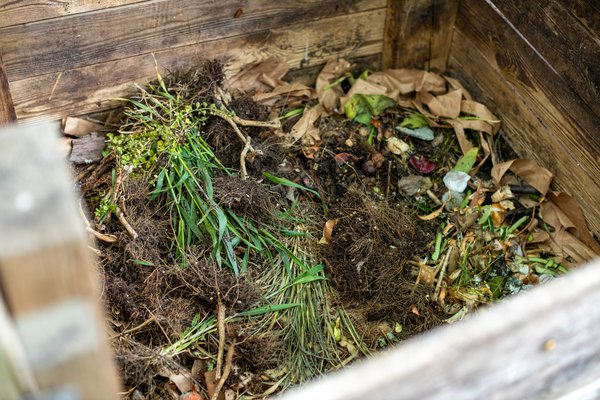Composting is the natural process of recycling organic materials into nutrient-rich fertilizer. It’s a great way to put your kitchen scraps and yard waste to good use, supercharge your soil and plants, and spend less money on expensive store-bought fertilizers and mulch.
Composting basics
When you build a compost pile, microorganisms feed on the organic material that you put in it, breaking it down in the process. The result of their work is compost, a dark, crumbly, earthy-smelling material that you can put in your gardens and window boxes, or spread on your tree roots and lawn.
There are two categories of material you can compost: Greens, which are rich in nitrogen; and browns, which are rich in carbon.
- Greens include food and vegetable scraps, along with most grass clippings and other yard trimmings; coffee grounds and paper coffee filters; paper tea bags (without staples); and crushed eggshells.
- Browns include dry leaves, plant stalks, twigs, and untreated wood chips. They also include shredded paper if it’s neither glossy nor colored; shredded cardboard, as long as it doesn’t have a wax coating or tape or glue on it; and shredded brown bags.
What not to compost
The list of what you generally shouldn’t compost includes inorganic material, which doesn’t biodegrade, as well as pet feces. It also includes bread, rice, meat, dairy products, and cooking oil, all of which attract pests. Cooking oil also can upset the compost’s moisture balance.
You also shouldn’t compost diseased plants, as they may transmit the disease to whatever you spread the compost on; walnuts, as they contain a compound that’s toxic to some plants; and plants such as ivy, dandelions, and kudzu, which will grow in your compost pile rather than decay in it.
Getting started
Your compost pile should be on level soil and somewhere it can get sun and rain. It should be at least 3 feet wide, 3 feet across, and 3 feet tall; but no larger than 5 feet wide, 5 feet across, and 5 feet tall.
You can build or buy an enclosure for it. If you choose to build an enclosure yourself, dig a hole and line it with screening so you can tell where the pile ends and the soil begins. You can build an inexpensive one with wire mesh and three-to-four poles for support, as well as with pallets and snow fencing.
You can also buy multiple types of bins, as well as compost tumblers, which enable you to rotate and mix your composting materials.
Adding compost
Start your pile with a 4-to-6-inch layer of bulky brown material, such as twigs and wood chips. This will help air circulate in it.
What you do next depends on whether you want your compost to be ready in 5 to 15 weeks, or 12 to 18 months.
If you go the short route, add equal weights of green and brown materials at the same time. Then add water until your compost pile is moist, but not waterlogged. Turn it with a pitchfork or compost aerator tool twice a week. (Turn it less frequently in winter).
- MORE ON HEALTH & WELLNESS
- Here’s how mental health and heart health are connected
- What you should know about cold-water therapy
- What parents and caregivers should know about eating disorders
If you go the long route, layer greens and browns and add water as needed. As the pile shrinks from composting, add two-to-three times as many brown materials as green materials. Make sure food scraps are covered by four-to-eight inches of leaves or other brown material.
Maintaining your compost pile
Your compost pile should be as wet as a wrung-out sponge. If it’s wetter, turn it. If it’s dryer, add water.
If your pile begins to smell rotten, it’s not getting enough air and you should turn it. If it smells like ammonia, you need to add more brown material.
If your pile is not composting, that’s because its temperature is too low. If that’s due to cold weather, insulate the pile with straw or cover it with a tarp. It also could be due to the pile being too small, in which case you should add materials to it; too dry (water it); poorly aerated (turn it); and/or lacking nitrogen (add green materials).
When your compost is ready to use, it will be dark brown and crumbly, like soil. It also will have an earthy smell and shouldn’t contain chunks of material that haven’t fully decomposed.
The dirt on composting
Composting can enable you to send less food scraps and yard waste to landfills and save money on fertilizer and mulch. All it takes is time, a little elbow grease, and some willing microorganisms!



